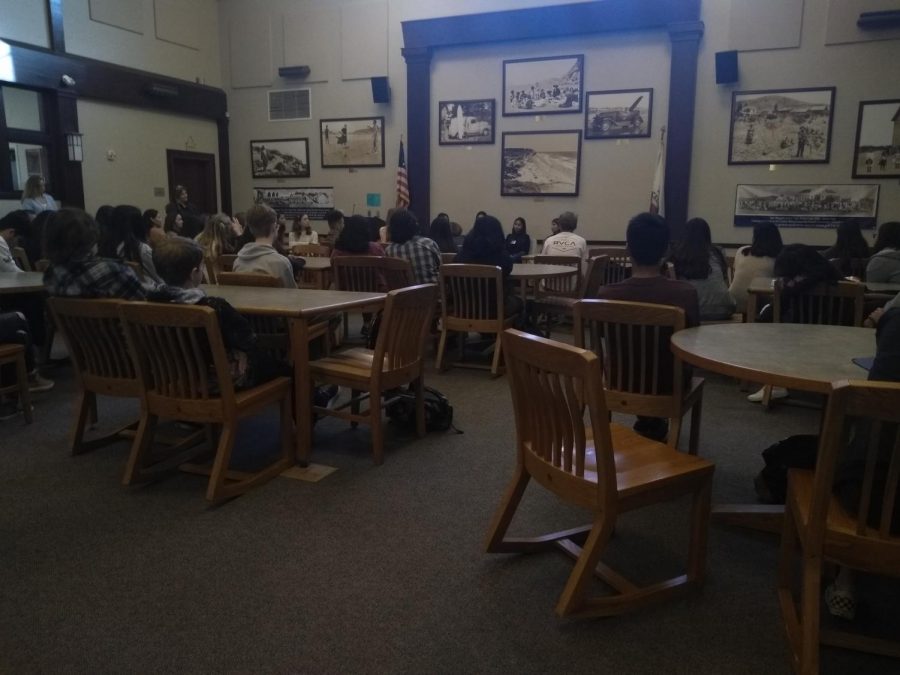Corazon de Vida members tell their stories
December 20, 2018
Andrea Lopez, 22, Brisa Alonso, 23, Rocio Martinez, 22, and Samantha Alvarado, 22 lined up in the Media Center and faced around 60 students from Spanish 5 and Spanish for Spanish Speakers classes with smiling faces. At first glance, no one would be able to guess the difficult childhood these four girls had pushed through as orphans. Their supervisor and Corazon de Vida President, Hilda Pacheco-Taylor stood alongside Spanish teacher Bryn Faris and principal Adam Camacho in the back, smiling proudly at the girls as they told their story and answered the student’s pressing questions. The students listened attentively to the four speakers sitting in front of them, not a phone in sight, and only the occasional distracted pair of eyes straying backwards towards the table of Oreos.
These four girls are visiting from an organization called Corazon de Vida, which is a program that provides funding and other support to orphanages throughout Baja California. “They have some incredible success stories of their children reaching higher education levels and overcoming outrageous circumstances to achieve success in their lives,” said Faris in an email. CDV supports 10 orphanages out of the 100 in Baja California, encompassing 500 children. For the past eight years, CDV has organized for middle and high schools to partner with local colleges for a college fair in Ensenada. CDV is also run by families and supported by churches and other organizations that pitch in money to their cause.
A majority of the conversation was career focused. One of the four girls detailed her struggles in the orphanage without adequate dental care, which ultimately inspired her to pursue a career in dentistry and give back to her community. “Imagine how much it would cost to take 500 kids to the dentist for regular appointments,” said Pacheco-Taylor. “Corazon de Vida did fundraisers to help those orphans who were in extreme pain and in need of immediate medical attention.”
The conversation was entirely in Spanish and the students offered questions such as, “Was there a teacher who inspired you as a child?” or “What kind of food did you eat?” and others regarding their current life in universities or their schedule in orphanages. There were plenty of laughs as they recounted memories and thoughtful pauses as the students took time to be thankful and process how different their childhoods were.
One of the girls explained the hardships in finding stable relationships under the roof of the orphanage. “I would make a good friend,” said the orphan in Spanish. “And then the next day, she would either escape or be relocated to another home and I would be forced to start again.”
“We have to take into consideration what we have. It doesn’t matter where we start, because we will always have opportunities for us to move ahead,” said Pacheco-Taylor. “We have two paths we can take. We can either be bitter about the situation, whether it be parents dying or getting into drugs, and convince ourselves that we are allowed to feel as such due to our bad lives. Or, we can try to learn and grow from this pain.”
“As Corazon de Vida, we serve as the wind beneath their wings,” said Pacheco-Taylor. “These [children] have such beautiful wings, and we help them fly.”
Although money donations are the most helpful way to support Corazon de Vida, students can also pitch in through becoming advocates on social medias such as Instagram and Facebook with @corazondevida.

